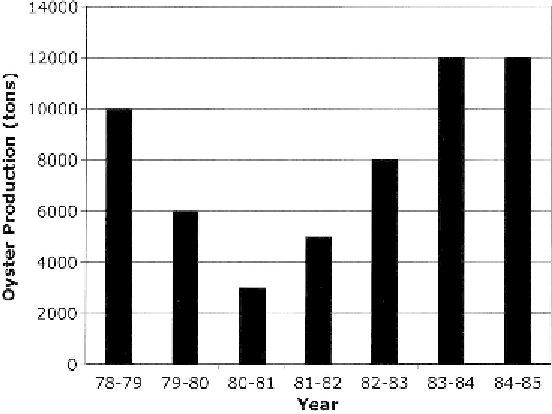Geology Reference
In-Depth Information
world. TBT has been observed to accumulate in fish and various marine
birds and mammals, with yet unknown consequences. Although it has not
been shown to pose a public health risk, one recent study reported
measurable butyltin concentrations in human liver.
34
The economic consequences of the shellfisheries decline led to a rapid
political response globally. The first publication
35
suggesting TBT to be
the causative agent appeared in only 1982, and led to prompt legislative
action. France was the first country to control the use of TBT-based
paints, in the first instance on boats
o
25 m in length at some coastal
locations. Oyster aquaculture in Arcachon Bay benefited immediately,
with a notably decline in shell deformations and TBT-body burdens,
and the complete recovery of production within two years (Figure 18).
Several other countries introduced various controls and bans on these
marine anti-foulants. Comparable improvements in oyster conditions
were subsequently observed in Great Britain and Australia. Similarly,
there have been many reported instances of restoration of gastropod
populations at previously impacted locations. Certainly the TBT flux to
the marine environment decreased, as manifested in sedimentary TBT
profiles. However, most of the legislation first introduced applied only to
small vessels and large ships continued to act as a source of TBT to the
marine environment. Imposexed gastropods were observed at sites (e.g.,
North Sea and Strait of Malacca) where the source of TBT could only
Figure 18 Annual oyster (Crassostrea gigas) production in Arcachon Bay, 1978-1985;
Restrictions on TBT use were applied starting January 1982
(Data from Alzieu, 1991.
36
)

